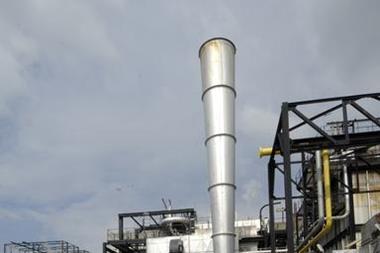Safety risks are inherent to the operational process of chemical manufacturing plants and refineries, but also pose a major concern for chemical facilities in other types of industry. By Leonardo Piazzi
Chemicals can be highly flammable and are often used under pressure or at high temperatures which create extra challenges in ensuring a safe working environment. One major incident alone could endanger the whole company.
Incidents in processing plants such as Flixborough, United Kingdom (1974), Seveso, Italy (1976), Mexico City (1984) and Bhopal, India (1984) highlighted the need for better hazard evaluation. In response to these incidents the public, governments and the industry demanded action.
The European Commission, for instance, issued industrial safety regulations in 1982, known as the Seveso Directive, covering the safety of the workers, the environment and industrial hazards. The directive and two subsequent revisions have been incorporated into the law of individual member states.
In the United States, industry associations mandated the adoption of community awareness and emergency response (CAER) plans, Congress passed the Emergency Planning and Community Right to Know Act (EPCRA) and amended the Clean Air Act. Further process safety management standards and risk management programmes were developed, and a federal agency, the Chemical Safety and Hazard Investigation Board, was created to investigate accidents and determine their causes.
The common response by chemical companies was to set up protection measures to determine the appropriate safety level. They want to avoid both under-protection and over-protection, which would involve excessive costs. The safety risk should be proportional to the severity of the potential loss and the likelihood of occurrence, and each company determines what level is tolerable.
Companies also increasingly established their own safety programmes with the aim of minimising injuries, environmental impact, business interruption and even negative publicity resulting from an event.
Simple but effective
Such safety management programmes need to be effective and simple, as cumbersome procedures may discourage people from using them. The key objective is to avoid safety programmes losing corporate attention.
Excessive time pressure may result in short cut decisions, overriding some steps in the operating procedures, which in turn lead to safety pitfalls. For instance, some incidents have resulted from the inadvertent mixing of chemicals that are not necessarily listed as dangerous by the codes, but which proved to be dangerous when combined.
Disasters such as AZF, Toulouse (France) in 2001and Buncefield (United Kingdom) in 2005 show that even with good risk management, incidents still happen. An analysis by the US Chemical Safety and Hazard Investigation Board of 167 incidents between 1980 and 2001 showed over 90% involved hazards which had been already recognised as a danger before the incident. The root causes of these incidents were all attributed to human error.
Risk engineering specialists can bring a different perspective to the industry. They can help companies learn from the best practice of others and highlight deficiencies in management systems. By working with the client to identify and quantify the risks using the process safety management approach, such experts can develop economic solutions for loss prevention deficiencies.
Risk management is also increasingly involved in governance activity that requires a very high level of integration among different departments. Loss prevention as a discipline encompasses several different areas of the company, and it is, therefore, a powerful tool when assessing the overall risk and evaluating the adequacy of the loss prevention programme.
Leonardo Piazzi is senior property loss prevention specialist, XL Insurance (Chemical Risk).
leonardo.piazzi@xlgroup.com
www.xlinsurance.com


















